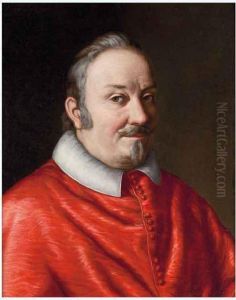Giacomo Bichi Paintings
Giacomo Bichi was an Italian painter, born in 1666 in Siena, Italy, during a period marked by the Baroque movement that influenced much of European art. Not as widely recognized as some of his contemporaries, Bichi nonetheless contributed to the artistic landscape of the time with works that reflected the Baroque’s emphasis on emotion, movement, and contrast. His death in 1750 marked the end of an era that bridged the Baroque and the beginnings of the Rococo.
Bichi’s work was primarily religious in nature, as was common for the period. He created numerous frescoes and paintings for churches and private chapels in and around Siena. His style was characterized by dramatic use of light and shadow, a hallmark of the Baroque, and his figures often conveyed a strong sense of emotion and spiritual fervor. Despite the prominence of religious themes, Bichi also explored mythological subjects, which allowed him more freedom to experiment with composition and expression.
Throughout his career, Giacomo Bichi received commissions from several prominent families in Siena, contributing to the decoration of public buildings and sacred spaces. However, much of his work remains under-studied, and some has been lost or attributed to other artists of the time. Bichi’s legacy is thus somewhat obscured in the shadow of more famous names like Caravaggio or Bernini, yet he remains a figure of interest for those studying the nuances of Italian Baroque art.
After his death in 1750, Bichi left behind a body of work that, while not extensive, provides insight into the religious and cultural priorities of his time. His paintings continue to be appreciated for their emotional depth and technical skill, emblematic of an era that sought to evoke the divine through the power of visual art. While research into his life and oeuvre is ongoing, Giacomo Bichi’s contributions to the Italian Baroque stand as a testament to the rich artistic heritage of Siena and the broader Italian context in which he worked.
